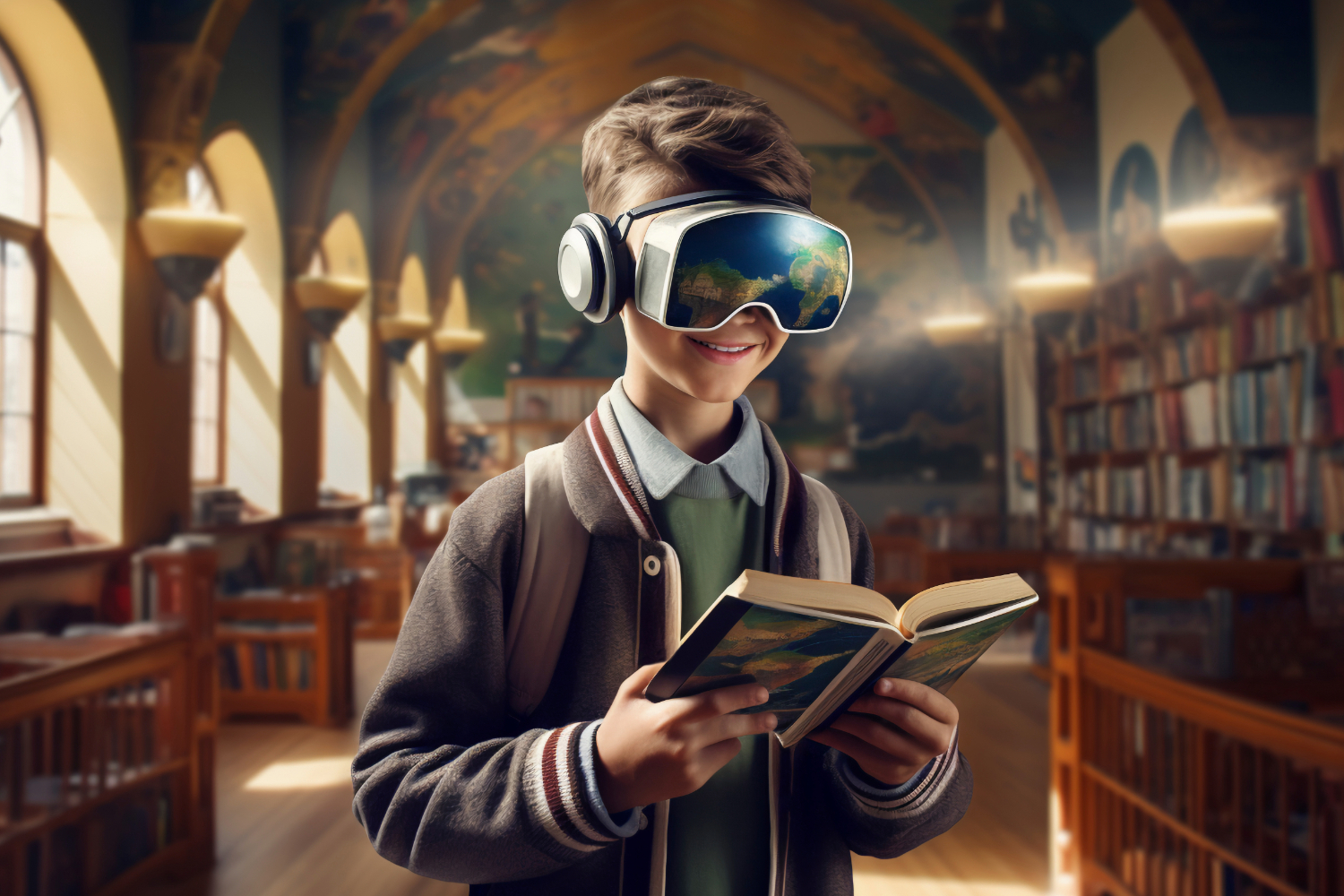
Transforming Traditional Education with Digital Innovations
Cutting-edge digital innovations like AI, VR, and online learning are changing traditional education, making it more accessible, engaging, and personalised for learners worldwide. Learn how technology is shaping the future of education.
The education sector has undergone a seismic shift in the past two decades. What was once confined to classrooms and chalkboards is now thriving in a digital-first environment. Incorporating digital innovations into traditional education has reshaped how teachers teach and students learn, making education more inclusive and tailored to individual needs.
The possibilities are endless, from virtual reality (VR) classrooms to AI-powered tutoring. As technology continues to evolve, schools and educators worldwide must adapt to meet the growing demands of modern learners. This article explores how digital innovations revolutionise traditional education, offering solutions to old challenges and opening doors to new opportunities.
The Digital Revolution in Education
The integration of technology into classrooms has redefined educational experiences. Digital tools bridge the gap between traditional teaching methods and the demands of 21st-century learners.
The Impact of Technology on Traditional Teaching Methods
- Enhanced interactivity with tools like smartboards and projectors.
- Access to global resources via the internet.
- Shift from rote learning to skill-based education.
For instance, a 2023 report by EdTech Impact revealed that schools utilising interactive digital tools witnessed a 40% improvement in student engagement compared to traditional methods. Digital tools foster collaboration, enabling students to work on projects even if they are in different geographical locations.
Breaking Barriers to Online Learning
Online learning has revolutionised access to education, making it easier for students worldwide to pursue knowledge without physical limitations.
Flexibility and Accessibility
Digital platforms like Coursera and Khan Academy offer courses on diverse subjects available anytime and anywhere. This flexibility particularly benefits:
- Working professionals seeking further education.
- Students in rural or remote areas.
- Individuals with disabilities may find traditional classrooms challenging.
According to UNESCO, online education has grown by 900% globally since 2000, proving its effectiveness in reaching underserved populations. Moreover, personalised learning experiences, where students can progress at their own pace, ensure better retention and understanding.
The Role of Artificial Intelligence in Personalized Learning
Artificial Intelligence (AI) is at the forefront of transforming education by catering to individual learning needs.
AI-Powered Tools and Benefits
AI tools analyse student performance to provide tailored solutions. Examples include:
- Adaptive learning platforms like DreamBox adjust difficulty based on student performance.
- AI tutors offer instant feedback and clarifications.
- Predictive analytics identifying students at risk of falling behind.
A 2022 study in Educational Technology Research showed that students using AI-powered learning platforms improved their grades by 30% on average compared to traditional methods. By identifying gaps in understanding, AI empowers educators to address specific challenges efficiently.
Gamification: Making Learning Fun
Gamification integrates game-like elements into educational activities, enhancing engagement and motivation.
Benefits of Gamification in the Classroom
- Encourages active participation.
- Fosters a positive competitive spirit positively.
- Rewards achievements, boosting confidence.
For example, Kahoot! and Classcraft use quizzes and interactive games to reinforce learning. Studies indicate that 72% of students find gamified lessons more engaging than traditional lectures. By making learning enjoyable, gamification reduces the monotony of repetitive lessons and encourages students to push their boundaries.
Virtual Reality (VR) and Augmented Reality (AR) in Education
VR and AR technologies offer immersive experiences, taking education beyond textbooks and screens.
Real-World Applications of VR and AR
- Virtual field trips allow students to explore places like ancient Rome or the Amazon rainforest.
- AR-enabled textbooks provide interactive 3D models of complex concepts.
- Simulation-based learning for medical and engineering students.
These technologies enhance comprehension by offering a hands-on approach. A survey by Global EdTech Insights found that 90% of educators believe VR/AR improves students’ understanding of complex topics. This approach bridges the gap between theoretical knowledge and practical application.
Challenges and Solutions in Adopting Digital Education
While digital innovations hold immense promise, their implementation comes with challenges.
Key Challenges
- Digital Divide: Limited access to devices and internet connectivity in underprivileged areas.
- Teacher Training: Educators may need more technical skills to utilise digital tools effectively.
- Cost Concerns: Implementing advanced technologies can be expensive for schools.
Effective Solutions
- Government Initiatives: Subsidizing internet and devices for low-income families.
- Professional Development: Training programs for teachers to integrate technology into their curricula.
- Public-Private Partnerships: Encouraging collaboration to share resources and reduce costs.
Overcoming these barriers is crucial to ensuring digital education remains an inclusive, equitable solution for all learners.
The Future of Education in a Digital World
As digital innovations evolve, their potential to transform education is limitless. Emerging trends include:
- Blockchain Technology: Secure credentialing and transparent grading systems.
- 5G Connectivity: Enabling seamless, high-quality virtual classrooms.
- Wearable Tech: Devices that monitor student engagement and health.
Education is becoming increasingly data-driven, allowing precise, evidence-based interventions to improve learning outcomes.
Final Thoughts
Digital innovations are not merely enhancing traditional education but redefining its foundation. From personalised AI tutors to immersive VR experiences, technology makes learning accessible, interactive, and practical. However, addressing challenges like the digital divide and teacher training is essential to unlock its full potential.
The future of education lies in a harmonious blend of traditional values and cutting-edge technology. Embracing this transformation ensures that every student, regardless of background, has the tools they need to succeed in the digital age.


